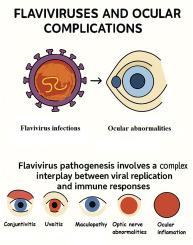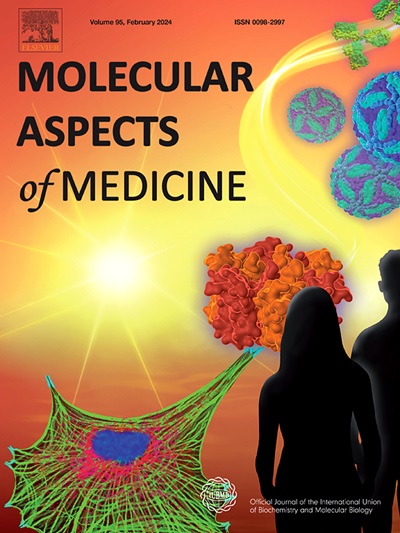The ocular immune system and Flaviviruses: A crossroad between defense and disease
IF 10.3
2区 医学
Q1 BIOCHEMISTRY & MOLECULAR BIOLOGY
引用次数: 0
Abstract
Flaviviruses are emerging arthropod-borne viruses that cause severe endemic infections and epidemics on a global scale. Recent Zika virus outbreaks have highlighted a significant link between the virus and ocular abnormalities, increasing interest in the pathogenesis of Flaviviruses. Flavivirus pathogenesis involves a complex interplay between viral replication and immune responses, leading to a wide spectrum of human diseases. Flavivirus infections can cause ocular complications that are usually self-limiting but can result in irreversible visual impairment and vision loss. These complications can affect both the anterior and posterior segments of the eye, and symptoms can range from mild conjunctivitis to more severe conditions like uveitis and even the inflammation of the optic nerve. Ocular inflammation often arises from the immune system's response to viral infections. In ocular Flavivirus infections, the immune response aims to protect the eye, but it can sometimes lead to inflammation and tissue damage. In this review, we summarize the current knowledge of the major Flaviviruses (Zika, Dengue, Yellow Fever, and West Nile) reported to cause ocular manifestations in humans, with emphasis on viral immunopathogenesis. Hence, we discuss how Flaviviruses modulate immune responses and cause ocular manifestations.

眼免疫系统和黄病毒:防御和疾病之间的十字路口。
黄病毒是一种新兴的节肢动物传播的病毒,在全球范围内引起严重的地方性感染和流行病。最近的寨卡病毒暴发突出了该病毒与眼部异常之间的重要联系,增加了人们对黄病毒发病机制的兴趣。黄病毒的发病机制涉及病毒复制和免疫反应之间复杂的相互作用,导致广泛的人类疾病。黄病毒感染可引起眼部并发症,通常是自限性的,但可导致不可逆的视力损害和视力丧失。这些并发症可以影响眼睛的前段和后段,症状可以从轻微的结膜炎到更严重的情况,如葡萄膜炎,甚至视神经炎症。眼部炎症通常是免疫系统对病毒感染的反应引起的。在眼部黄病毒感染中,免疫反应旨在保护眼睛,但有时会导致炎症和组织损伤。在这篇综述中,我们总结了目前已知的引起人类眼部症状的主要黄病毒(寨卡病毒、登革热病毒、黄热病病毒和西尼罗河病毒),重点介绍了病毒的免疫发病机制。因此,我们讨论黄病毒如何调节免疫反应和引起眼部表现。
本文章由计算机程序翻译,如有差异,请以英文原文为准。
求助全文
约1分钟内获得全文
求助全文
来源期刊

Molecular Aspects of Medicine
医学-生化与分子生物学
CiteScore
18.20
自引率
0.00%
发文量
85
审稿时长
55 days
期刊介绍:
Molecular Aspects of Medicine is a review journal that serves as an official publication of the International Union of Biochemistry and Molecular Biology. It caters to physicians and biomedical scientists and aims to bridge the gap between these two fields. The journal encourages practicing clinical scientists to contribute by providing extended reviews on the molecular aspects of a specific medical field. These articles are written in a way that appeals to both doctors who may struggle with basic science and basic scientists who may have limited awareness of clinical practice issues. The journal covers a wide range of medical topics to showcase the molecular insights gained from basic science and highlight the challenging problems that medicine presents to the scientific community.
 求助内容:
求助内容: 应助结果提醒方式:
应助结果提醒方式:


